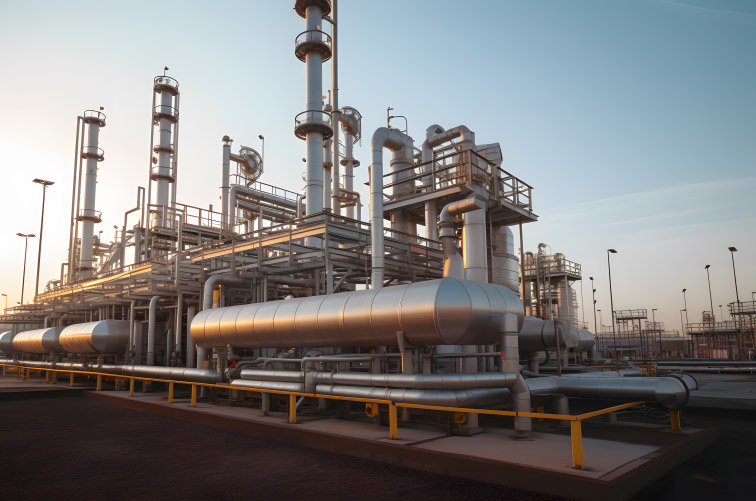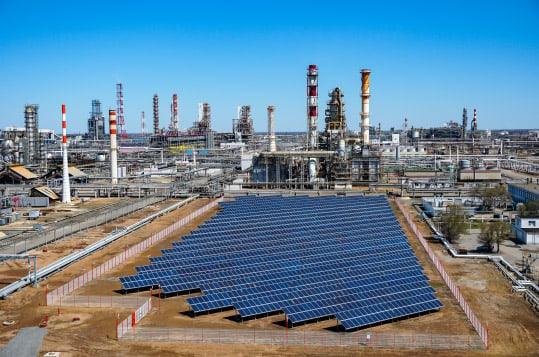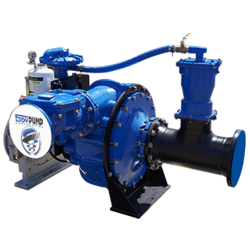Application of EDDY Pump in the Hydrocarbon Processing Industry



Application of Our Slurry Pumps in the Hydrocarbon Processing Industry

- Crude Oil Transfer: Slurry transport pumps transfer crude oil from storage tanks to refineries or terminals. The pumps can handle the varying viscosities and solid content often found in crude oil.
- Drilling Mud Circulation: In drilling operations for oil and gas wells, slurry transport pumps are essential for circulating drilling mud. These pumps help maintain the desired pressure and viscosity of the mud, enabling efficient drilling and preventing blowouts.
- Hydrocarbon Refining: Slurry transport pumps transport various refinery materials, including catalysts, crude oil residuals, and other byproducts. They ensure smooth movement and processing of these materials throughout the refining stages.
- Tank Bottom Sludges: In the storage tanks used for crude oil and refined products, sediments and sludges can accumulate at the bottom. High solids pump remove and transfer these materials for further processing or disposal.
- Sand and Scale Handling: During oil production, sand and scale can be produced along with hydrocarbons. Slurry pumps transport these abrasive materials, preventing equipment damage and ensuring smooth operations.
- Oil Sand Extraction: In oil sand mining and extraction processes, high solids pumps transport the oil sand slurry from the mining area to the extraction plant. These pumps can easily handle the heavy mixture of bitumen, water, and sand.
- Tailings Management: In hydrocarbon processing, tailings are the solid waste materials generated during production and refining. Slurry transport pumps transport and manage these tailings, ensuring proper disposal and minimizing environmental impact.
- Slop Oil Transfer: Slop oil is a mixture of oil, water, and solids that accumulate during different processes in refineries and other hydrocarbon facilities. Heavy-duty slurry pumps efficiently transfer and process slop oil to recover valuable hydrocarbons and dispose of the waste properly.
- Wastewater Treatment: In hydrocarbon processing plants, wastewater with high solid content is generated. High solids pumps assist in transferring this wastewater to treatment facilities for proper disposal or recycling.
- Pipeline Cleaning: Pipelines can accumulate deposits and debris over time, limiting flow. Slurry pumps are used for pipeline pigging, which involves sending cleaning pigs through the pipeline to remove these deposits and ensure efficient flow.
- Tanker Offloading: Slurry pumps are employed during offloading crude oil or its products from tankers to onshore facilities. They assist in transferring the cargo safely and efficiently.
- Desalting Operations: In desalting units, slurry pumps handle the water-oil emulsion, separating water and salt from crude oil before further refining.
CALL FOR SALES OR SUPPORT
If you need help with Pump Selection, Sales or Engineering Support
Call 619-345-5446

Application of EDDY Pump’s Hydraulic Dredging in the Hydrocarbon Processing Industry

- Channel Maintenance and Deepening: Hydraulic dredging maintains navigational channels, ports, and harbors, ensuring safe passage for vessels carrying hydrocarbon products. It also deepens channels to accommodate more giant tankers and support efficient transportation.
- Pipeline Trenching and Burial: In offshore oil and gas installations, submersible hydraulic dredge creates trenches for laying pipelines securely on the seabed. Additionally, it helps bury the pipelines to protect them from potential damage caused by marine activities and natural forces.
- Wellhead and Platform Installation: During the construction of offshore wellheads and platforms, submersible hydraulic dredge is employed to level the seabed, remove debris, and prepare the foundation for stable installations.
- Subsea Cable and Equipment Placement: Submersible hydraulic dredge creates pathways for subsea cables and equipment in hydrocarbon exploration and production operations, such as umbilicals and risers.
- Sediment and Sludge Removal: In refineries and petrochemical plants near water bodies, hydraulic dredger removes accumulated sediment and sludge, maintaining the integrity of intake and outfall structures.
- Underwater Structure Maintenance: Hydraulic dredging can be utilized to clean and maintain underwater structures, such as piers, jetties, and loading platforms, which are essential for the smooth functioning of hydrocarbon transportation and processing operations.
- Environmental Remediation: In cases where hydrocarbon spills or releases have occurred, hydraulic dredging can be utilized to clean up and remove contaminated sediments from affected areas, aiding in environmental restoration efforts.
- Sand and Gravel Extraction: Hydraulic dredging extracts sand and gravel from underwater locations for various purposes, including construction, land reclamation, and aggregate supply for concrete production.
- Offshore Platform Decommissioning: During the decommissioning of offshore platforms, hydraulic dredging removes any remaining structures, sediment, and debris, restoring the seabed to its original state.
- Oil Spill Cleanup: In the unfortunate event of an oil spill, hydraulic dredging can remove and recover the spilled oil from water bodies. Specialized equipment separates the oil from the water, allowing for proper disposal or recycling of the recovered hydrocarbons.
- Cooling Water Intake Cleaning: Many hydrocarbon processing facilities use water for cooling. Over time, the cooling water intake pipes can become clogged with sediment and marine growth. Hydraulic dredging helps remove these obstructions, ensuring uninterrupted cooling water flow and optimal plant performance.




